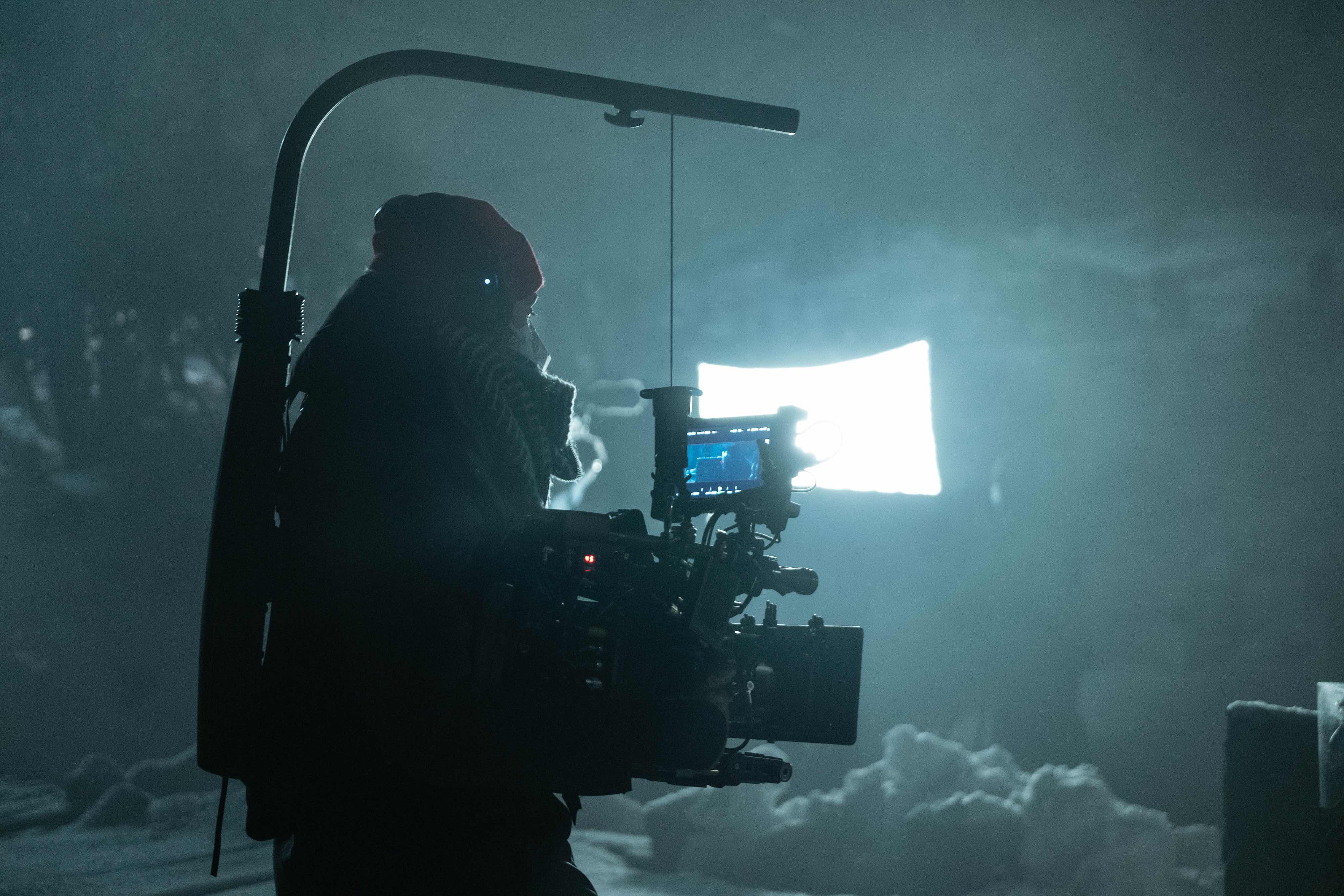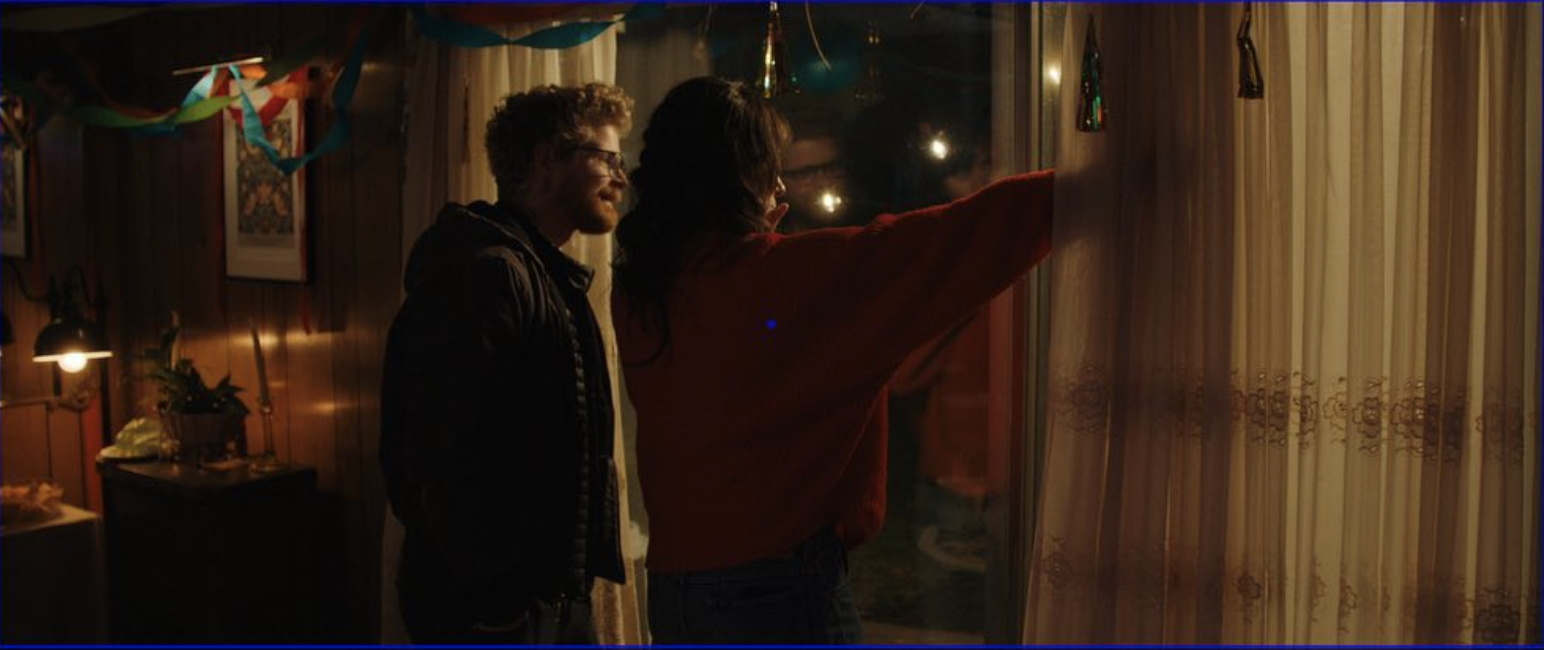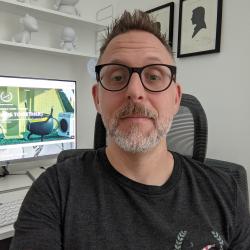If you’re a fan of filmmaking, then the role of cinematographer is probably one you look upon with some reverence. Like an artist, painting on the canvas, the director of photography is in charge of the visual storytelling for a film, using the tools at their disposal to bring a director’s vision to the screen.
If you have a particular interest in the world of photography in film, then those you admire – Deakins, Yeoman, Doyle, Richardson, etc – will most likely all have one thing in common. With cinematography in the world of features dominated by men – it was only a few years back, in 2018, that a woman (Rachel Morrison) was first nominated for the best-cinematography Oscar – we’re happy to report the world of short film is doing a better job, in terms of representation and diversity, in this area.
With the likes of Morrison and Ari Wegner working their way into the thoughts of the awards selectors, we’ve seen other cinematographers, like Rina Yang (Kiss of the Rabbit God, Telephone Me) & Mollie Manning Walker (Run), make the transition from short film (and music videos) to features. Another name to make that jump is today’s interviewee Charlotte Hornsby, a favourite here at S/W HQ, who has featured as director of photography on five of our selected short films.
Joining us to discuss her work and the importance of short film in her career, Hornsby is the latest in our interview series The Importance of…, which aims to provide insight into the various filmmaking roles essential in bringing a short film to the screen.
Introducing Charlotte Hornsby

Charlotte Hornsby is a New York-based cinematographer whose work has garnered attention at festivals such as SXSW, BAM Cinemafest, BFI London Film Festival and the Sundance Film Festival where the short Lucia, Before and After she shot for director Anu Valia and the short Hair Wolf she shot for director Mariama Diallo won The Short Film Jury Award for U.S. Fiction in 2017 and 2018.
American Cinematographer featured Master, the film she shot for Amazon Studios, in their Sundance Standouts for the 2022 Sundance Film Festival and the film also earned her recognition by BAFTA who named her a 2023 BAFTA Breakthrough.
Hi Charlotte, welcome to Short of the Week! As we’re very much a director focused platform, our audience may not be aware of your work, but you’ve worked as Cinematographer on a number of noteworthy short films including Lucia, Before and After, Hair Wolf, Inheritance and more. I’ve wanted to get you on the site to talk about your work for a while, as although I think a lot of people have a rough idea of what a Cinematographer does, unless you’ve spoken to one, or seen one at work, there are probably quite a few misconceptions about the craft. With this in mind, let’s start at the beginning, what was it that attracted you to this particular area of filmmaking?
Growing up, I loved painting, writing, music and theater and I loved making movies with my sisters and neighbors on our family’s VHS camcorder. When I discovered that cinematography was its own craft, it felt like a practice where all the art forms I love converged
“My job on set is to be the eyes and pulse of the audience”
Cinematography is still a young art form and, though we think of it as an outgrowth of photography, it really owes so much to theater. As a cinematographer, my job on set is to be the eyes and pulse of the audience. The theater director Anne Bogart talks about the importance of keeping a taut line of connection between actors and between the actors and the audience. The idea is that you never want the line to go slack. On set I’m an invisible scene partner with the actors, holding that line of connection taut. I’m bearing witness to the event and also shaping the event with my movement, my vantage point, my lighting.
My partner Jesse Ruuttila is also a filmmaker and we work closely together. We have a phrase, “You never want the spell to break.” And I think its the same concept as not letting the line of connection go slack. You want to keep the audience spellbound.

Hornsby shooting on Mariama Diallo’s debut feature Master
As is the case with a lot of people working in film/tv your early credits include music videos and short films. How did you first get into working on short films, and what is it that attracts you to the format?
One of my favorite movies of all time is a short by Jane Campion called A Girl’s Own Story. When I tell friends about it, I offer this knee-jerk kind of apology: “Well it’s actually a short…” I hate that this is my gut reaction – as if the movie’s length disqualifies it from being real cinema. A Girl’s Own Story is playful and subversive and contains all the heartache and danger of girlhood. It’s also 25 minutes long, and shouldn’t be any longer or any shorter.
It’s a strength to find the appropriate medium or container for your work; I’ve certainly seen features that have a short’s worth of cinematic ideas stretched out across an hour and 30 minutes just to be legitimized as a feature. Sometimes, like a Raymond Carver short story, it’s just about leaving the audience with a potent feeling, like an electric charge that just flowed through them and has left its mark.
The work of Charlotte Hornsby in Five Short Films
You worked with Mariama Diallo on her short film Hair Wolf and then her debut feature Master and you’ve worked with Annalise Lockhart on a couple of short films, how important are these regular collaborations and these relationships with directors for a Cinematographer.
I love working with Mariama and Annalise because, in each relationship, we’re comfortable interrogating the story together, which takes real vulnerability and trust. This is critical because films are such logistical feats. Even when you carve out weeks for pre-production on a short and months for pre-production on a feature, that time gets swiftly swallowed by location scouting, crewing up, tracking down gear and scheduling with an ever-shifting calendar of actor availability. Locations fall through, the budget needs to be reshuffled, and the director has so much on their plate that oftentimes the most important aspect of my job is to help the director carve out time to check back in with the story. Our shot-listing time is important not just because it allows us to hone in on the visual language, but because it gives us the chance to discuss the emotional experience of each scene. That way when we’re on set, holding the jaws of time open to fit in our shots, we both know what the audience should feel in any given moment.
Every time I work with a director, we collect a library of references which are especially useful at the beginning of the prep process to start to transpose the written experience of the script into a visual experience and to hone in on the tone. For Real Talk, a SOTW short I shot for Artemis Shaw, we looked at Cassavetes’ Opening Night, specifically at how unbroken tracking shots from the dimly lit backstage corridors to the hard light of the stage create the feeling of being exposed and powerless before a hungry and savage audience.

Hornsby on the set of Mariama Diallo’s short film Hair Wolf.
Short film is often seen as a stepping-stone for those in the filmmaking industry, looking at your own experiences, how has working on short films helped to shape your career?
Shorts have played a vital role in my career. Lucia Before and After, the short I shot for Anu Valia, won the Jury Award for U.S. Fiction at Sundance in 2017. The following year, Hair Wolf, the short film I shot for Mariama Diallo, played Sundance and won the same award. This level of recognition meant that more people were able to watch these films than is typical for the short film format, so other producers and directors became familiar with my work.
Getting your short film seen and taken seriously by people is the biggest impediment to getting the chance to shoot features. This can be an incredibly frustrating process. Features are so expensive to produce that, as an art form, they’re inaccessible to most filmmakers. There’s no other art form where the medium is this inaccessible to the artist and it often privileges those who have resources over those who have vital stories to share.
Having worked in both short films and features, from the perspective of a Cinematographer, how do the two differ (apart from one obviously being a much longer process)?
One of the key differences to shooting a story over 5 weeks instead of 3 days is that it can be a challenge to track where you’re emotionally situated in the arc of the story. I recently shot a short with a non-actor and it was very important that we shoot chronologically so the performer didn’t have to film a heart-to-heart with another actor before we’d filmed the scene of their characters meeting for the first time. I was a big proponent of this plan and it was easy to execute, as each scene took place in a different location.
On a feature, however, the director will get a lot more pushback to shooting chronologically, as returning to locations is often expensive and a logistical headache for the locations and art department. Some productions make it possible by simplifying the locations and relying heavily on free exteriors, but if this option isn’t available to you, it’s really critical to be mindful of where you are in the story and to find a way to quiet all the pressing logistical needs so you can tune into how the characters are feeling at this moment in time.
“Because of the endurance features require, prep is even more important”
There’s also the physical reality of the longer process. When you shoot your first feature, at about Day 3 you’ll think, “How on earth am I going to keep this up for 5 weeks?” but the beautiful thing about the body is that it adapts very quickly to this new schedule. By Week 2 you’ll have a groove. By Week 3, you’ll think you’ve lived on this set your whole life and there’s no place you’d rather be. Because of the endurance features require, prep is even more important. Doing 15 set-ups a day for 5 or 6 days in a row can get exhausting, especially if they’re all overnights. The discoveries and decisions you made in prep give you a level of confidence and decisiveness as you move through set-ups. You and the director can share the confidence that you’re getting what you need, letting them focus on performance as you work with your team to dial in lighting and pace.

Hornsby on the set of Mariama Diallo’s Master – the two having worked together on short film and then feature.
Can you explain a little about your involvement in production? One of the misconceptions I mentioned earlier is that some people will just think a Cinematographer is involved in the shoot, but you’re also involved in pre & post-production, can you talk a little about how this usually works?
I love to do as much prep with the director as possible. For Master, Mariama and I shot listed the film front to back twice and made photo boards of most action scenes on location. I’ve heard that the Coen Brothers distribute a print-out of the storyboards for the day in lieu of sides and rarely deviate from them. That being said, I also just completed a short where the director and I blocked each scene on location in prep, but improvised a lot of shots on the day. You have to be an active participant in what is unfolding in front of you.
Dynamic blocking is crucial to effective shot design, but it’s rare these days to get rehearsal time with the actors before the shoot, so I love blocking out scenes on location in advance. You have time for trial and error in prep that you never get on set, and some scenes you play out in your head completely shift once you’re dealing with the facts of the location, like where the sun path falls and how the space is laid out. Even if you work with storyboard artists, the pre-visualized edit can be deceiving as storyboard artists have a tendency to draw palatial spaces with compelling architecture you likely don’t have the budget for.
On a recent project, a location fell through last minute, so the day before the shoot the director and I blocked the scene in his apartment. It was the act of moving around in the space that made us realize the final scene needed to take place in one character’s tiny white-walled bedroom instead of the much more cinematic plant-lined steel blue living room. The scene was about trust being violated and it was much more intimate and devastating staged in the bedroom.
The films you’ve worked on have played at a number of A-list festivals, picking up numerous awards along the way. Is this important in your career and how do you personally measure the success of your involvement in a film that doesn’t get this kind of critical acclaim?
Oh man, this is a topic I think we as filmmakers need to talk a lot more about. The average viewer has more access to movies now, with so many studio catalogs on streaming platforms and obviously all of YouTube and Vimeo at our fingertips. The volume of shorts and features is overwhelming. I think it’s part of the reason why we put so much faith in a few institutions to tell us what movies are worth our time.
There are a handful of festivals that signify that you’ve succeeded by getting in, and it’s incredibly affirming to be chosen by these festivals. It’s also dangerous for us to put too much stock in a few institutions to legitimize works of art because we not only miss out on some of the best work being made today – but sometimes that stamp of approval will override our own instincts. I definitely cave to this temptation and will catch myself ranking my work by what played at the biggest festival and in turn got the best response on Instagram, where no one has even seen the movie yet.
“It’s important to attend festivals both big and small”
I’ve seen brilliant work at major festivals as well as smaller festivals with brilliant programmers. It’s important to attend festivals both big and small in person because, even if our society functions as if internet-based encounters are personal, they aren’t. As obvious as this may sound, it’s important to meet the people you’re going to work with in person before you work together. Strangely that’s increasingly rare.
I was very overwhelmed the first time I went to Sundance and I set out to go see Amy Goodman speak as a kind of no-networking soul-cleanser. Ironically, it was in line to see Amy Goodman that I met the director of my first feature, Haroula Rose, an incredibly warm and reassuring line-mate whom I found myself being very candid with (the line was so long that neither of us got in.)

Hornsby working on the lighting with Sean Gradwell
What’s the most common challenge you experience as a Cinematographer and if you had one piece of advice for someone looking to follow a similar path as yours, what would it be?
I remember when my first major job offer came through, I was weeks out from starting work on another job. I called a DP friend well-established in her career for advice. “Get ready,” she said, “you’ll be making these decisions for the rest of your life.”
Jobs land on your doorstep last minute or evaporate into thin air days before you’re about to start. It’s really hard to make plans to see your family and friends and the precarity of the job leaves you feeling fickle and unreliable to the people you love most, which is a really shitty feeling. It’s also hard not to yoke your feelings of self-worth to your success, when Instagram is designed to marry the two.
“As tired, dog-eared and overused as the word ‘story’ is, it really is what matters most”
Carve out time for the people you love. They will understand that the nature of your job means all plans are last minute, so if you have to cancel a visit with them last minute, then drive down or fly out to see them last minute. Weddings and funerals matter. Don’t miss them. And when the choice you face is between projects, as tired, dog-eared and overused as the word “story” is, it really is what matters most.
What can you tell us about any future projects you have coming up?
With the SAG-AFTRA and WGA strikes, I’ve been shooting a lot of shorts this summer. I wrapped principle photography on three shorts I’m really excited about. Hopefully I’ll get to share them this time next year!
Feature image: Daniel Klutznick
 Rob Munday
Rob Munday